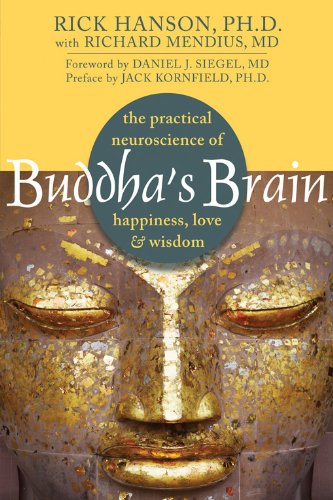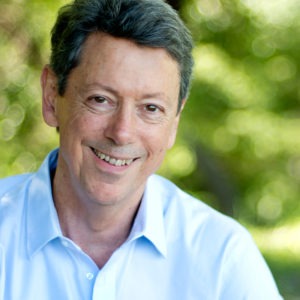Buddha’s Brain Summary

6 min read ⌚

The Practical Neuroscience of Happiness, Love, and Wisdom
OK, we’ve encountered upon some kind of a pattern:
When we aren’t writing summaries of scientists writing on scientific matters (the cosmos, the future of the mind, evolution, etc.) we are writing summaries of scientists writing about popular non-scientific subjects (like, self-help and personal development books).
The reason:
In a world of false news and alternative facts, we like to keep you on the safe side of truth.
Your summary for today is once again written by a Ph.D., so we guess he knows a thing or two. And when he is a psychologist and talks about happiness, love, and wisdom – well, you better listen.
Or, in our case, read on.
Who Should Read “Buddha’s Brain”? And Why?
Now, why would you ask us such a stupid question!
We just said that “Buddha’s Brain” is about happiness, love, and wisdom! It’s like the Holy Trinity of things you desperately want in life! So, we guess the question should actually be “Who shouldn’t read ‘Buddha’s Brain.’”
We actually have an answer to that question.
Firstly, people who don’t like to read interestingly written books about interesting subjects. Also, those who prefer to remain skeptics without actually reading anything. Psychology majors who don’t want to learn anything outside their books. Your regular Joes and plain Janes who don’t want to try and find a solution to their stress problems.
All the others – give “Buddha’s Brain” a go.
About Rick Hanson
Rick Hanson , Ph.D., is an American psychologist, meditation trainer and a New York Times bestselling author. A summa cum laude graduate from UCLA, he is a senior fellow of the Greater Good Science Center at University of California, Berkley, and a regular speaker at major universities (Harvard, Oxford, Stanford) and NASA.
, Ph.D., is an American psychologist, meditation trainer and a New York Times bestselling author. A summa cum laude graduate from UCLA, he is a senior fellow of the Greater Good Science Center at University of California, Berkley, and a regular speaker at major universities (Harvard, Oxford, Stanford) and NASA.
His books have been published in more than thirty languages. “Just One Thing,” “Hardwiring Happiness,” and “The Neurodharma of Love” have been particularly successful.
You can read more at http://www.rickhanson.net/.
“Buddha’s Brain Summary”
Let’s start off with a simple, yet important distinction:
Mind is not the same as a brain. And they differ the same way an eBook differs from a traditional book: the former is virtual, the latter physical. In our case, the brain is a bundle of synapses; the mind is the sum of mental processes these produce.
But, what if it is possible to reverse the link? In other words, what if the mental processes (our mind) are capable of structurally changing its physical generator (our brain)? Wouldn’t this give us a lot of power?
Of course, it will. And, interestingly so, science has almost conclusively proven that this is not only possible but that, moreover, this happens on a regular basis! Neuroscientists refer to this connection as Hebbian theory, or Hebb’s rule.
In theory, it means that “neurons that fire together, wire together.” In praxis, it means that cab drivers who memorize complex street maps have larger than average hippocampi! That’s where the brain stores this kind of information! For you, an ordinary hippocampus will do; not for the cab drivers.
Once you think about it, it’s not that strange, really!
After all, a person who exercises will have a much more muscular body than a person who doesn’t. The brain is just another organ. Consequently, it can be trained. The only thing is that its exercises are somewhat different and less tangible.
Self-reflection is one of them. According to Rick Hanson, it is the key to leading a happier, more fulfilled life.
Why?
Because your right hand will be more developed than your left-hand if you are a righthanded tennis player! Can you see where we’re going with this? That’s right: areas of your brain associated with happiness will be more developed than those associated with sorrow if you’re a positive-thinking person.
If Buddha could, why shouldn’t you be able to?
And the first thing he did to achieve happiness was self-reflect. And think about unhappiness. Why are we suffering?
We now have an even better answer than him: suffering is evolution’s way of telling us to stay away from something. The difference between ancient people and modern people is that, nowadays, we fear much more abstract things than snakes and spiders, such as shame or embarrassment.
It’s an old part of the brain, and, frankly, there’s not much you can do about it. It will always be programmed to feel pain. Or, to use Hanson’s words, to hurt once hit with a very real (hot plate) or an abstract “dart” (being not loved back).
But, what you do next is what makes the difference!
Because once the first dart is absorbed by your brain, the ball is on your mind’s court. Now, you can accept the sting and end it there: the sympathetic nervous system (SNS) will do the rest. Or you can go on thinking and screaming and raging about it and send the SNS into overdrive.
This may be the most valuable lesson of this book:
What makes you unhappy is not the first dart you can’t control. It’s the second one you can. And that’s really tragic!
Fortunately, there’s a way to fight this. You just need to teach yourself to think differently.
Firstly, you can be mindful. Mindfulness is what you achieve by meditating. It’s a state of complete awareness and attention control. It also enlarges your actual brain!
Secondly, you can think in terms of intentions. Because, if you can visualize something, your brain will react to it even if it is not true. And, thus, in few years’ time, will produce a good environment for you to make it true.
Finally, you can start practicing composure. It means letting your feelings sink in a bit. That way, you can absorb the first blow. And react to it in a rational – and not emotional manner.
The bottom line is:
You can train your body through your body. But you can only train your brain through your mind. Meditation is one of the most powerful ways to do this.
Even science says so.
Key Lessons from “Buddha’s Brain”
1. The Theory of Two Darts
2. Self-Reflect and Meditate
3. Love and Compassion Are in Your DNA
The Theory of the Two Darts
If you want to be happy in life, it’s really important to understand that actual misfortune is responsible for only a small part of your unhappiness. The large part of it is you thinking about this misfortune. Rick Hanson’s theory of the two darts is a good way to visualize it.
And to remember: the first dart hurts, and it will eventually hit you. The second dart hurts more, and you can learn to evade it.
Self-Reflect, Meditate and Be Mindful
There are many ways to do this, but possibly the most powerful and researched through is meditation. Because meditation may help you focus more and lead you to a composure-practicing state of mindfulness.
In this state, it’s easy to absorb blows, for the simple reason that you’re able to focus on what is the actual present and what is only hypothetical future. Differencing between them is what makes the difference between a sad and a happy person.
Love and Compassion Are in Your DNA
You won’t believe this, but love and compassion are hardwired into your DNA. Humans have evolved to need and give love. Without the love of a human parent, a human child will never grow healthy enough. And without society – based on empathy and compassion – humans would not have reached the top of the evolutionary chain.
Think about this. Consequently, restructure your brain to think this instinctually.
And be prepared to reap the rewards!
Like this summary? We’d Like to invite you to download our free 12 min app, for more amazing summaries and audiobooks.
“Buddha’s Brain” Quotes
Mindfulness involves the skillful use of attention to both your inner and outer worlds. Share on X The brain continues to produce simulations today, even when they have nothing to do with staying alive… By its very nature, the simulator pulls you out of the present moment. Share on X If you can simply stay present with whatever is arising in awareness—whether it’s a first dart or a second one—without reacting further, then you will break the chain of suffering right there. Share on X Meditation increases gray matter in brain regions that handle attention, compassion, and empathy. Share on X Deliberately stimulate feelings of strength to deepen their neural pathways. Share on X Each of us has two wolves in the heart, one of love and one of hate. Everything depends on which one we feed each day. Share on X Compassion is supported by recalling the feeling of being with someone who loves you, evoking heartfelt emotions such as gratitude, being empathic, opening to the suffering of other beings, and wishing them well. Share on XOur Critical Review
“Buddha’s Brain” is a comprehensive and reader-friendly study of the relationships between old-world practices such as meditation and newest neuroscientific findings such as Hebb’s rule. As such, it is not only an interesting but rather an exceptional book.
There are some unproven scientific findings Hanson takes for facts, but we don’t think that this diminishes the power of the book in any serious way. One way or another, the advises this book offers seem great – even if one is skeptical on their scientific basis.
In other words, one way or another, “Buddha’s Brain” may help you learn to lead a happier, smarter and more love-filled life.
And what more can you ask from a book?








